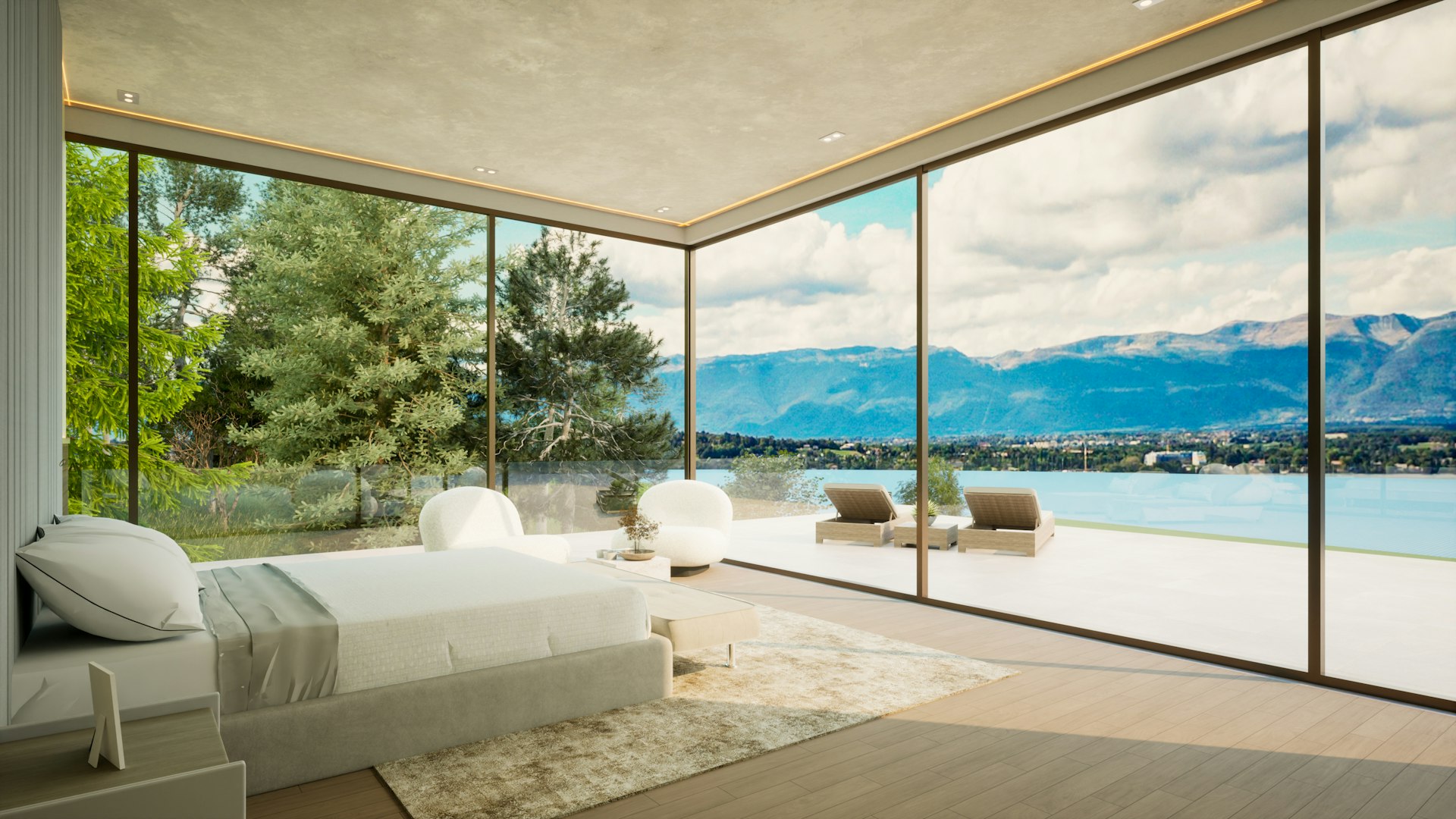Transforming Modern Homes with Smart Lighting Solutions: Trends, Benefits, and Practical Guidance for 2025

Photo by Caroline Badran on Unsplash
Introduction: The Rise of Smart Lighting in Contemporary Living
In 2025, smart lighting solutions are redefining the way homeowners illuminate their spaces. These systems deliver much more than basic lighting-they offer adaptive control, energy efficiency, wellness enhancements, and seamless integration with smart home platforms. As technology advances, lighting has become a central component of modern interior design, blending minimalist aesthetics with highly customizable features [1] . This article provides an in-depth look at the latest trends, practical benefits, and step-by-step guidance for implementing these solutions in your home.
1. Essential Features of Smart Lighting for Modern Homes
Today’s smart lighting solutions combine personalization , energy awareness , and automation to create dynamic environments tailored to your lifestyle. Unlike older systems that simply allowed remote on/off control, modern setups learn your habits and adjust lighting in real time. For example, AI-driven lighting can track your daily routines-such as reading in the living room at 8 PM-and automatically shift brightness and color temperature to support your activities [1] .
Key features include:
- Voice and App Control: Adjust lights using smartphone apps or popular voice assistants (Amazon Alexa, Google Home, Apple HomeKit).
- Adaptive and Circadian Lighting: Automatically changes color temperature throughout the day to mimic natural sunlight, supporting energy, focus, and relaxation [3] .
- Scheduling and Automation: Set routines for wake-up, bedtime, or away modes for enhanced security and convenience.
- Energy-Efficient LEDs and OLEDs: Modern smart bulbs and panels use less power and last longer than traditional lighting [4] .
2. Trends Shaping Smart Lighting in 2025
The latest trends highlight a blend of technical innovation and design sophistication . Minimalist fixtures, invisible light sources, and integrated designs are increasingly popular, allowing lighting to enhance architecture without visual clutter [4] . Energy-efficient OLED panels are also gaining ground, providing soft, uniform illumination ideal for workspaces and creative studios.
Another breakthrough is the Matter protocol , a universal standard that ensures devices from different brands work together seamlessly. This compatibility gives homeowners the freedom to mix and match products without compatibility issues [1] .
Practical examples of current trends:
- Recessed LED strips and hidden lighting for a clean, contemporary look.
- Multi-functional fixtures, such as lamps with built-in USB charging or shelves, ideal for compact living spaces [5] .
- Circadian lighting routines that boost wellness by supporting natural sleep cycles [3] .
- Retro-inspired designs updated with smart controls for a blend of nostalgia and technology [4] .
3. Wellness and Productivity Benefits
Smart lighting is increasingly recognized for its impact on health and productivity. Circadian rhythm lighting supports the body’s natural cycles by providing cool, energizing light in the morning and warm, calming tones in the evening. This has been shown to improve focus, mood, and sleep quality, making it an essential feature for home offices and family spaces [2] .
For example, a homeowner can program bedroom lights to gradually increase in brightness each morning, simulating sunrise and making waking up easier. At night, lights automatically dim and switch to warmer shades, helping signal to the body that it’s time to wind down. Such routines can be set up through most smart lighting apps or voice-controlled platforms.
4. Integration with Smart Home Ecosystems
Modern smart lighting systems are designed to work within broader smart home ecosystems . Integration with security cameras, thermostats, and motion sensors allows for advanced automation. For instance, lights can automatically turn on when you arrive home, or switch off when a room is unoccupied. The adoption of the Matter protocol means you can confidently combine products from top brands without worrying about compatibility [1] .
To get started, you may:
- Choose a central platform (e.g., Apple HomeKit, Google Home, Amazon Alexa).
- Purchase compatible smart bulbs, switches, or integrated fixtures-look for the Matter logo or confirmed compatibility.
- Download the app for your chosen system and follow the setup instructions provided by the manufacturer.
- Pair devices and configure routines, schedules, and automations as desired.
If you’re unsure which products to choose, many retailers and smart home professionals can provide consultations and tailored recommendations. You can search for “licensed smart home installers near me” or contact local electricians with experience in smart lighting integration.
5. Outdoor Smart Lighting: Enhancing Safety and Ambience
Outdoor spaces benefit greatly from smart lighting trends. Pathway and landscape lighting not only improve safety but also add charm to gardens and patios. Solar-powered and app-controlled options are popular for their eco-friendliness and convenience. String lights and decorative fixtures can transform outdoor areas into inviting retreats for evening gatherings [5] .
To implement outdoor smart lighting:
- Assess your outdoor space and determine areas that need illumination (e.g., walkways, patios, entrances).
- Consider solar-powered or low-voltage options for ease of installation and energy savings.
- For smart control, select weather-resistant fixtures compatible with your chosen smart home system.
- Follow manufacturer instructions for installation, or hire a licensed electrician for more complex setups.
6. Implementation Steps and Access Guidance
Adopting smart lighting in your modern home involves several key steps. Here’s a practical guide to ensure a smooth transition:
- Evaluate Your Needs: Identify the rooms or areas you want to upgrade. Prioritize high-traffic zones like kitchens, living rooms, and bedrooms.
- Research Compatible Products: Look for bulbs, switches, or fixtures that support the Matter protocol or your preferred smart home platform. Read recent product reviews and comparison guides from reputable lighting and electronics retailers.
- Plan Your Budget: Smart lighting solutions typically range from affordable starter kits to premium designer fixtures. Prices vary based on features and brand.
- Purchase from Verified Retailers: Buy from established electronics stores or directly from manufacturer websites.
- Install and Configure: Most smart bulbs and switches are designed for DIY installation, but complex systems may require professional help. Use manufacturer setup guides or consult a licensed electrician for advanced projects.
- Create Routines and Automations: Use your app or voice assistant to set schedules, scenes, and automation rules that suit your lifestyle.
If you prefer expert assistance, search for “smart lighting installation services” in your region. Seek referrals from friends, family, or local home improvement stores. For warranty and support, register your products with the manufacturer upon purchase.
7. Overcoming Common Challenges
Compatibility and network reliability are two common hurdles. While the Matter protocol resolves many issues, always check compatibility lists before purchasing. For reliable performance, ensure your home Wi-Fi network is robust and up to date. If connectivity issues persist, consider using dedicated smart home hubs or mesh Wi-Fi systems for stronger coverage.
Addressing privacy concerns is also important. Review the privacy policies of your chosen platforms and opt for systems that offer data encryption and user controls. Regularly update firmware to maintain security.
8. Alternatives and Future Directions
For those who want to start small or avoid major upgrades, consider plug-in smart bulbs or standalone smart lamps. These can be integrated gradually and expanded as your needs grow. Energy-efficient technologies such as OLED lighting are becoming more accessible and may soon offer further savings and design flexibility [4] .
As the market evolves, expect even greater personalization, energy management, and integration with wellness-focused technologies. Stay informed by following reputable lighting industry blogs, visiting manufacturer websites, or consulting with certified smart home professionals for the latest developments.

Photo by Marcus Urbenz on Unsplash
Conclusion
Smart lighting solutions are transforming modern homes by offering adaptive, energy-efficient, and wellness-focused illumination. By understanding current trends, leveraging compatible products, and following practical implementation steps, you can create a comfortable and stylish living environment that adapts to your needs. Whether you’re looking for minimalist fixtures, advanced automation, or outdoor ambience, there are innovative options to suit every home in 2025 and beyond.
References
- [1] Hevilite (2025). Smart LED Lighting Trends to Watch in 2025.
- [2] PROLIGHTING (2025). Summer 2025 Lighting Trends: What Designers Should Know.
- [3] Magnify Electric (2025). Modern Lighting Trends for Homes and Businesses.
- [4] Decorilla (2025). 20 Lighting Trends 2025: The Future of Home Illumination.
- [5] Residence Supply (2025). 2025 Lighting Trends for Modern Homes: Illuminate Your Space with Style.
MORE FROM mumsearch.com













